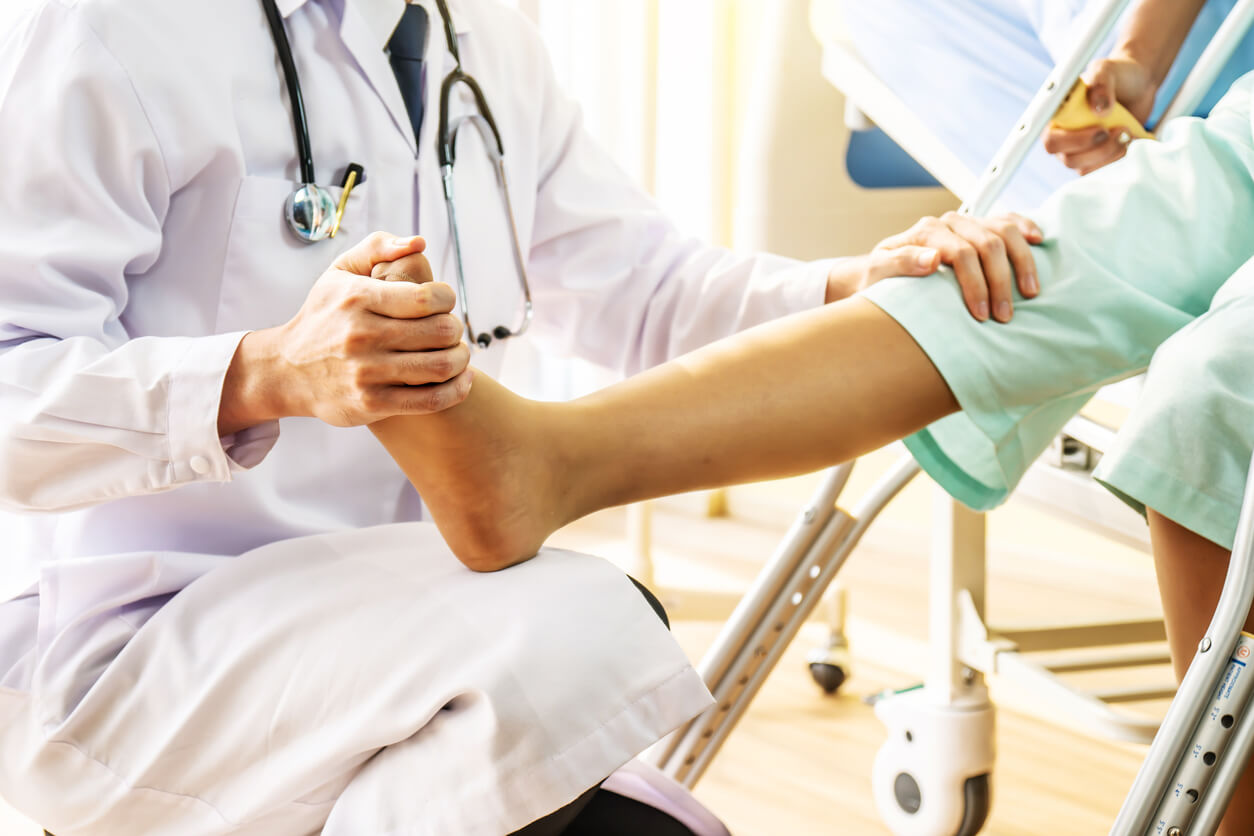Orthopedic injuries can disrupt your daily life and limit your ability to stay active. From the discomfort of joint pain to the limitations of muscle strains, these issues can significantly impact your well-being. Preventing such injuries is crucial for maintaining both your mobility and quality of life. At Dr. Mayur’s Clinic, we understand the importance of proactive care and our leading specialist Dr. Mayur Purandare shares expert advice on how to safeguard your joints and bones. With the right strategies and exercises, you can enhance your physical resilience and enjoy a more active, pain-free lifestyle.
Understanding Orthopedic Injuries
Orthopedic injuries encompass a range of conditions affecting bones, joints, and muscles. Common issues include sprains, strains, fractures, and arthritis. These injuries often result from physical activity, accidents, or repetitive stress. By adopting preventive measures, you can significantly reduce your risk of these conditions.
Regular Exercise: A Key to Injury Prevention
Engaging in regular exercise strengthens your muscles and improves flexibility. This enhances joint stability and reduces the likelihood of injuries. Focus on exercises that target various muscle groups to ensure overall strength. Incorporate strength training, cardiovascular exercises, and flexibility routines into your weekly regimen.
Strength Training: Building muscle strength supports your joints and bones. Incorporate weightlifting or resistance training exercises into your routine to build muscle strength and enhance overall fitness. Aim for at least two days a week of targeted strength training to effectively build muscle and improve your overall physical health.
Cardiovascular Exercise: Activities like walking, running, or swimming improve cardiovascular health and overall fitness. These exercises also help maintain a healthy weight, reducing strain on your joints.
Flexibility Routines: Stretching exercises enhance your range of motion and prevent stiffness. Incorporate stretching exercises into both your warm-up and cool-down routines to improve flexibility. Yoga and Pilates are excellent forms of exercise that can greatly improve flexibility, balance, and overall well-being.
Proper Technique and Body Mechanics
Using correct techniques and maintaining good body mechanics are crucial for preventing injuries. Whether you’re lifting weights or performing daily activities, following proper form is essential.
Lifting Techniques: When lifting objects, use your legs to lift rather than your back. Maintain a straight back and bend at the knees, ensuring your torso remains upright while lowering your body to prevent strain and injury. Avoid twisting your body while lifting.
Posture: Maintain proper posture whether you’re sitting, standing, or walking by keeping your back straight, shoulders relaxed, and head aligned with your spine to support overall body alignment and reduce strain. Use ergonomic furniture and supports to promote good posture during work.
Sports and Activity: If participating in sports, use appropriate gear and follow recommended guidelines. Warm up before engaging in physical activities by performing light exercises and stretches to prepare your muscles and joints.
Healthy Diet and Bone Health
Nutrition plays a significant role in maintaining strong bones and joints. A balanced diet, abundant in essential nutrients like calcium, vitamin D, and protein, plays a crucial role in supporting bone health
Calcium and Vitamin D: Calcium is crucial for bone strength, while Vitamin D helps your body absorb calcium. Incorporate dairy products, such as milk and yogurt, leafy greens like spinach and kale, and fortified foods enriched with vitamins and minerals into your diet. Sun exposure also helps your body produce Vitamin D.
Protein: Protein supports muscle health, which in turn helps protect your joints. Include lean meats, legumes, and nuts in your diet to meet your protein needs.
Hydration: Staying hydrated is important for joint health. Make sure to drink at least 8-10 glasses of water daily to ensure that your joints are well-lubricated.
Managing Weight for Joint Protection
Excess weight can place additional stress on your joints, particularly those in the lower body.
Maintaining a healthy weight helps reduce the risk of joint-related injuries and conditions.
Balanced Diet: Combine a balanced diet with regular exercise to manage your weight effectively. Focus on whole foods and avoid excessive consumption of processed foods and sugary beverages.
Regular Activity: Incorporate physical activity into your daily routine to support weight management. Aim for a minimum of 150 minutes of moderate exercise each week to effectively improve cardiovascular health, boost endurance, and enhance overall fitness.
When to Seek Professional Advice
If you are consistently feeling pain or discomfort, it is crucial to seek advice from a qualified healthcare professional. Addressing orthopedic issues early can prevent more serious conditions from developing. Regular check-ups and consultations with an orthopedic specialist are essential for maintaining optimal health. At Dr. Mayur’s Clinic, we provide tailored solutions to address specific needs. Whether you’re recovering from an injury or seeking advice on injury prevention, professional guidance is invaluable.
Final Thoughts
Preventing orthopedic injuries involves a combination of regular exercise, proper techniques, a healthy diet, and weight management. By following these tips, you can keep your joints and bones healthy and reduce the risk of injuries. At Dr. Mayur’s Clinic, we are dedicated to helping you achieve and maintain optimal orthopedic health. For personalized care and expert advice, consult Dr. Mayur Purandare, the Best Orthopedic Surgeon in Wakad. Prioritizing your orthopedic health today will pay off in a healthier, more active future.


